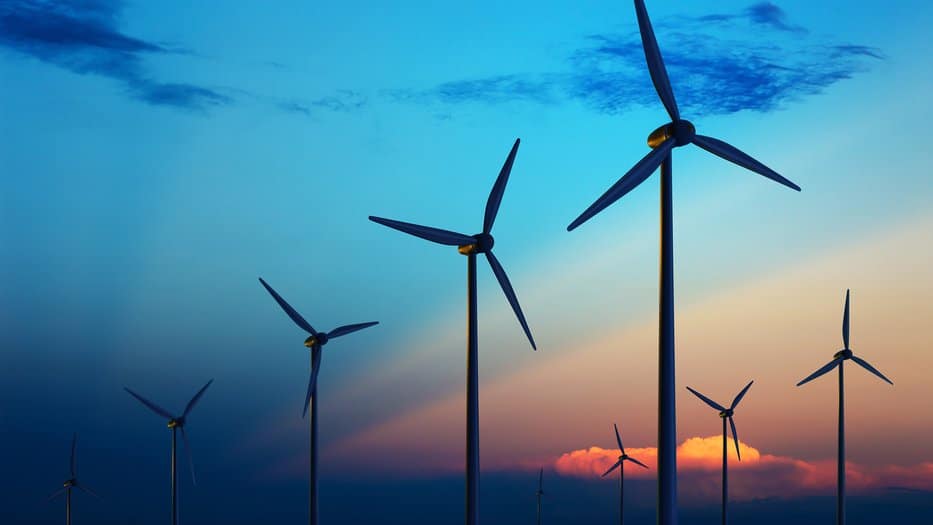Wind energy: Advances and opportunities

In the quest for sustainable energy solutions, wind power emerges as a leading frontier. This post explores the significant advancements in wind energy technology and the abundant opportunities it presents for a greener future.
While wind turbines have dotted landscapes for decades, recent developments have considerably enhanced their efficiency and feasibility as a primary energy source. Let's delve into the world of wind energy, examining how it's setting the stage for environmental and economic transformations.
Introduction to Wind Power
Wind power, the conversion of wind energy into a more useful form of energy, is not a novel concept. However, its importance has exponentially grown as the world shifts towards sustainable energy sources. Wind energy harnesses the natural air flow through turbines to generate electricity, offering a clean alternative to fossil fuels.
Recent technological advancements have significantly reduced the cost of wind energy, making it one of the most competitive renewable energy sources globally. Moreover, improvements in turbine design and materials have increased efficiency, enabling wind farms to produce more power than ever before.
As countries aim to reduce carbon emissions, wind energy stands out as a viable and promising solution. Its potential to create jobs, stabilize energy prices, and reduce environmental impact makes it a key player in the global energy market.
Technological Advancements
One of the most significant advancements in wind energy technology is the development of larger, more efficient turbine blades. These blades allow turbines to capture more wind, thereby generating more electricity.
Additionally, innovations in turbine technology have led to the creation of floating wind turbines. These can be installed in deep water, where wind speeds are higher, broadening the potential locations for wind farms.
Another breakthrough is the use of artificial intelligence (AI) and machine learning in optimizing wind farm operations. These technologies predict wind speeds and direct turbines to adjust accordingly, maximizing efficiency.
Economic and Environmental Opportunities
The expansion of wind energy offers substantial economic benefits. It provides a boost to local economies through job creation in the manufacturing, installation, and maintenance of wind turbines.
From an environmental perspective, wind power is a clean energy source that significantly reduces greenhouse gas emissions when compared to fossil fuels. Its development is crucial in combating climate change and promoting biodiversity by preserving natural habitats.
Furthermore, the scalability of wind energy projects allows for their implementation in a variety of settings, from rural to urban, enhancing energy accessibility and security.
Challenges and Solutions
Despite its potential, wind energy faces challenges such as public opposition, wildlife impacts, and intermittent wind speeds. However, through strategic planning, community engagement, and technological innovation, these challenges can be addressed effectively.
Emerging technologies like energy storage systems and smart grids are pivotal in managing the variable nature of wind power, ensuring a reliable energy supply.
Global Wind Energy Outlook
The global outlook for wind energy is incredibly positive, with countries around the world investing in wind power as part of their strategies to achieve carbon neutrality. The International Energy Agency (IEA) forecasts a significant increase in global wind energy capacity over the next decade.
This growth is driven by both policy support and the intrinsic economic advantages of wind energy, highlighting its role in the future energy mix.
The Role of Policy and Regulation
Government policy and regulation play a crucial role in the adoption and expansion of wind energy. Incentives such as tax credits, subsidies, and feed-in tariffs are effective tools in promoting wind energy investment.
Moreover, setting ambitious renewable energy targets and reducing bureaucratic hurdles can accelerate the development of wind projects, contributing to national and global sustainability goals.
Conclusion
Wind energy stands at the forefront of the clean energy transition, offering a solution to both environmental and economic challenges. As technology advances, the opportunities for wind power continue to expand, marking it as a cornerstone of a sustainable future.
Embracing wind energy not only aligns with global efforts to combat climate change but also presents significant advancements in how we generate and consume power. Its ongoing evolution is a testament to human ingenuity and our collective pursuit of a more sustainable and prosperous world.
In conclusion, the advancements and opportunities within wind energy are pivotal for our journey towards sustainable living. As we harness the power of the wind, we pave the way for cleaner, more resilient energy systems that benefit both our planet and future generations.

Related